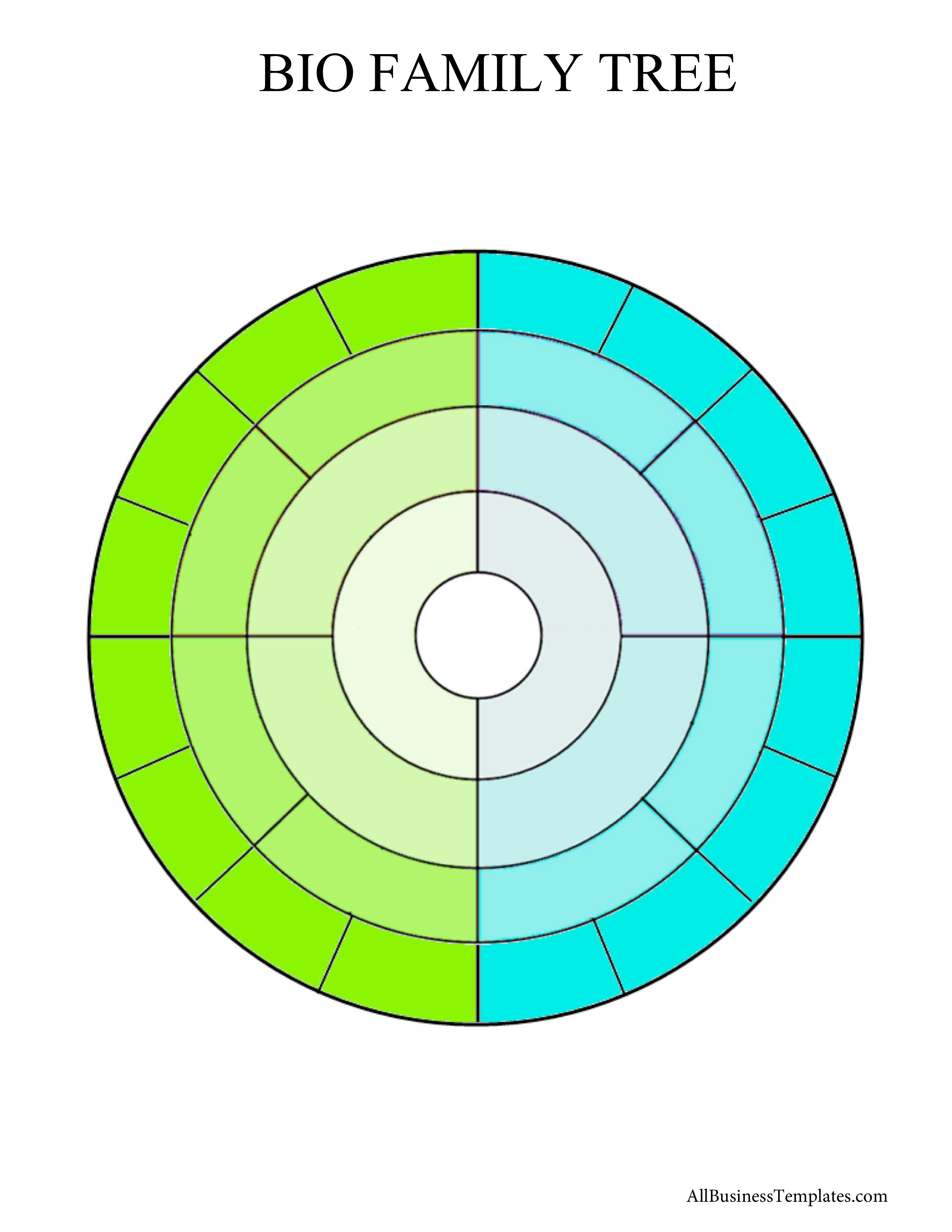Circular Family Tree
Save, fill-In The Blanks, Print, Done!

Download Circular Family Tree
Adobe Acrobat (.pdf)- This Document Has Been Certified by a Professional
- 100% customizable
- This is a digital download (208.36 kB)
- Language: English
- We recommend downloading this file onto your computer.
How to create a biological family tree? Download this useful Circular Family Tree template now!
A circular biological family tree is an alternative representation of a traditional family tree, typically displayed in a circular or radial format. It can be a creative and visually appealing way to showcase your family connections. Here's a step-by-step guide on how to create and use a circular biological family tree:
- Gather Information: Collect information about your family members, including names, birthdates, and relationships. Identify the central person around whom the family tree will revolve (often yourself or an ancestor).
- Choose a Format: Decide whether you want to create a physical diagram on paper or use a digital tool for a more dynamic representation.
- Use this or a different template: If you prefer a digital approach, consider using family tree software or online tools designed for creating circular family trees, such as this circular family tree template.
- Create the Central Node: Place the central person (you or the chosen ancestor) in the center of the circle. This person is usually the focus of the family tree.
- Add Generations: Arrange the family members in concentric circles, with each circle representing a generation. Place the parents in the circle outside the central person's circle, followed by their parents in the next circle, and so on.
- Connect Relationships: Use lines or arrows to connect family members, indicating relationships. For example, draw a line between parents and children or use different line styles to represent various relationships (solid lines for biological relationships, dashed lines for adoptions, etc.).
- Include Important Details: Add essential information like birthdates, marriage dates, and death dates. This information can be placed next to each person or on connecting lines.
- Color and Design: Consider using colors or symbols to distinguish branches or highlight specific family lines. This can enhance the visual appeal of your family tree.
- Annotations and Labels: Include labels or annotations to provide additional information or context about specific family members. This can help viewers understand key details at a glance.
- Review and Update: Regularly review and update your circular family tree as you gather more information or as your family grows. This ensures that the representation remains accurate and up-to-date.
- Share and Preserve: Share your circular family tree with other family members to foster connections and preserve your family history. You can print it, share a digital file, or even create an online version for easy access.
How to fill in this Circular Family Tree:
- Introduce the Genogram/Family Tree to your family members and ask them for information;
- Use Squares for Males, Circles for Females, Triangles for Unborn Children, Miscarriages & Abortions. Connect with lines for relationships.
- You can begin at the bottom with the family or the top with the Great Grandparents or oldest know relatives.
- Ask for as much information as the family members can provide: birthdays, dates of marriages, divorces, or death.
- For living relatives ask if there was ever a reason I would need to contact him/her how could I reach them (address, phone #)
- Inquire about themes and family patterns: serial relationships, drug/alcohol dependency, violence, etc.
- Also look for strengths: lasting marriages, education, and cultural ties.
- Put age inside the symbol and date of birth to the side or off to the side.
- Use exact dates of marriage, divorce, and separation if available.
- Put children in order of birth—oldest to the left.
- Analyze the illnesses and their relationships.
Please have a look at it and you might even discover this template has a slightly different perspective and can be very helpful.
Download this Circular Family Tree template now and start making your family tree in a bit.
DISCLAIMER
Nothing on this site shall be considered legal advice and no attorney-client relationship is established.
Leave a Reply. If you have any questions or remarks, feel free to post them below.
Family Tree Templates
Do you want a medical family tree, a public official family tree or a simple one to explain family members to your kids. We have it all for you.
Read moreRelated templates
Latest templates
Latest topics
- Formal Complaint Letter of Harrasment
How do I write a formal complaint about harassment? Check out these formal complaint letter of harrasment templates here! - Google Sheets Templates
How to work with Google Sheets templates? Where to download useful Google Sheets templates? Check out our samples here. - Letter Format
How to format a letter? Here is a brief overview of common letter formats and templates in USA and UK and get inspirited immediately! - IT Security Standards Kit
What are IT Security Standards? Check out our collection of this newly updated IT Security Kit Standard templates, including policies, controls, processes, checklists, procedures and other documents. - Excel Templates
Where do I find templates for Excel? How do I create a template in Excel? Check these editable and printable Excel Templates and download them directly!
cheese

